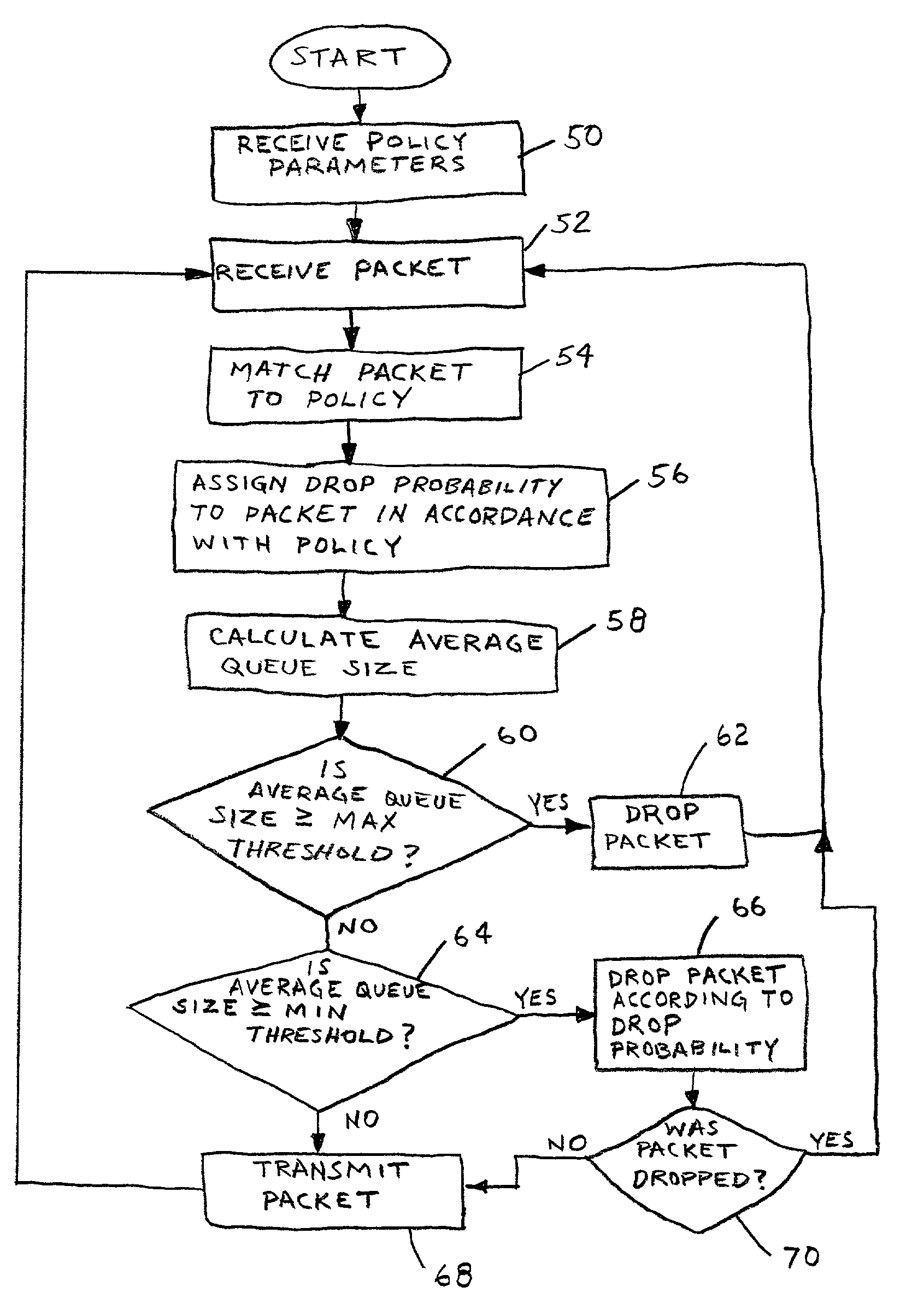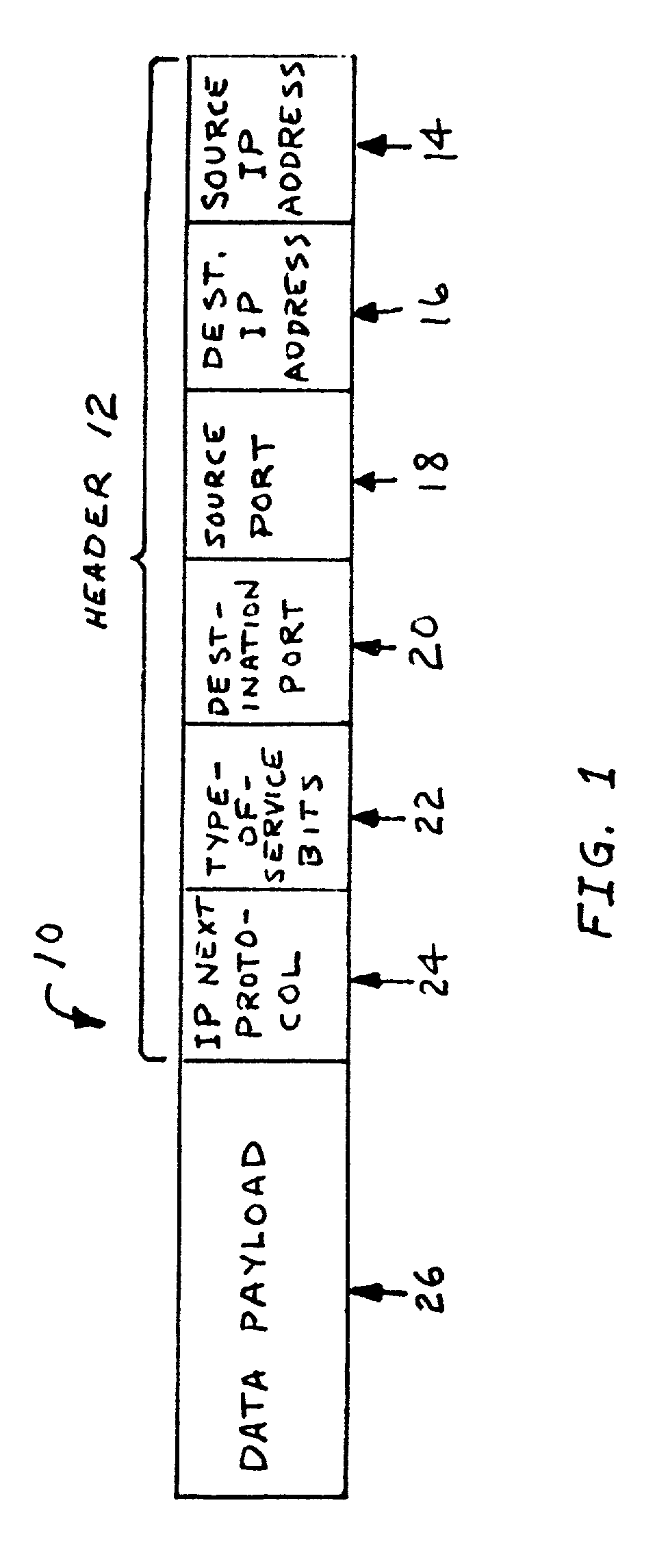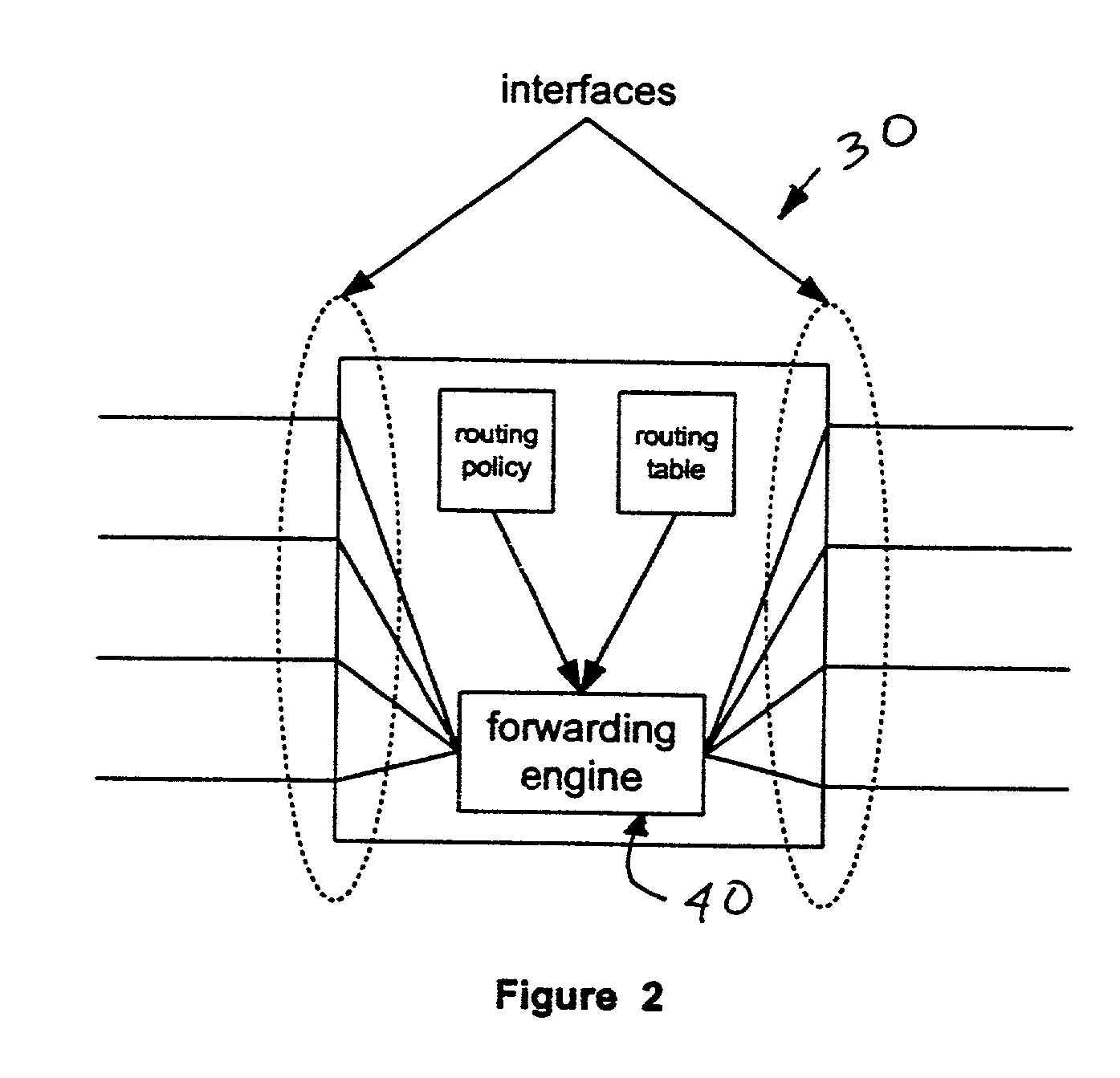Policy-based weighted random early detection method for avoiding congestion in internet traffic
a technology of internet traffic and policy-based weighted random early detection, applied in the field of telecoms, can solve the problems of inability to provide customers with lost information in the form of dropped packets, many new applications placing real-time demands on the internet, and the queues of network routers become full
- Summary
- Abstract
- Description
- Claims
- Application Information
AI Technical Summary
Benefits of technology
Problems solved by technology
Method used
Image
Examples
Embodiment Construction
[0022]Referring to the drawings, FIG. 1 illustrates a typical IP packet 10. Packet 10 may comprise a header 12 and a data payload 26. More specifically, header 12 may be comprised of source IP address 14, destination IP address 16, source port 18, destination port 20, type of service bits 22, and IP next-protocol field 24.
[0023]FIG. 2 illustrates router 30 that contains policy-based logic as well as a conventional routing table, both of which interact with router 30's forwarding engine 40 to determine how packets are routed. As seen in FIG. 2, router 30 has two interfaces for receiving and transmitting packets. The receiving and forwarding of packets is handled by forwarding engine 40 according to the routing table and routing policy of the particular router 30 as is described below in more detail.
[0024]In FIG. 3, exemplary router 30 is shown in more detail. For purposes of illustration and clarity of explanation, this description will focus on the operation of congestion avoidance ...
PUM
 Login to View More
Login to View More Abstract
Description
Claims
Application Information
 Login to View More
Login to View More - R&D
- Intellectual Property
- Life Sciences
- Materials
- Tech Scout
- Unparalleled Data Quality
- Higher Quality Content
- 60% Fewer Hallucinations
Browse by: Latest US Patents, China's latest patents, Technical Efficacy Thesaurus, Application Domain, Technology Topic, Popular Technical Reports.
© 2025 PatSnap. All rights reserved.Legal|Privacy policy|Modern Slavery Act Transparency Statement|Sitemap|About US| Contact US: help@patsnap.com



